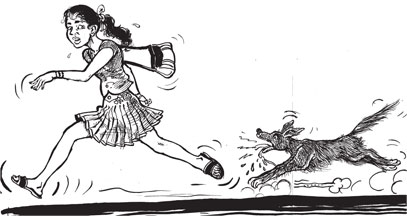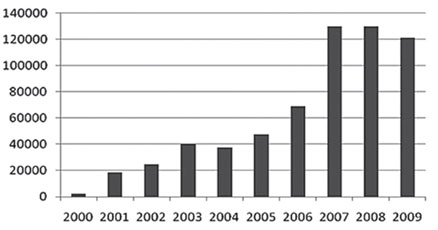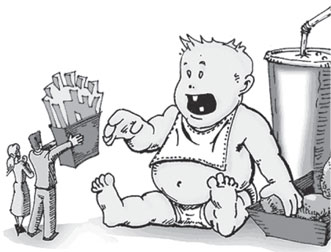|

Vaccinate now against rabies
By Nilma DOLE
 Sri Lankans are animal lovers and they love having pets at home that
are lovingly cared for and fed, like a loved one. In this way, the
killing of animals has been banned and even though it is not a legal
offence, Sri Lankans by nature, would never harm an animal. This is why
we are blessed with the world's prized endemic species and have a wide
variety of animals in our national parks due to our karma of animal
love. Sri Lankans are animal lovers and they love having pets at home that
are lovingly cared for and fed, like a loved one. In this way, the
killing of animals has been banned and even though it is not a legal
offence, Sri Lankans by nature, would never harm an animal. This is why
we are blessed with the world's prized endemic species and have a wide
variety of animals in our national parks due to our karma of animal
love.
However, it becomes a difficult situation to determine the question
of right and wrong when it comes to quelling a rabid animal. Are we
allowed to kill a rabid animal? No matter how we feel about it, rabies
is still present in every province of the country but only in the urban
areas. "We have never heard or seen a case of an animal in a national
park or in the wild having rabies which shows that the problem is very
much in urban areas," said the Director Health, Public Health Veterinary
Service of the Health Ministry Dr. P.A.L. Harischandra.
The best we can do is vaccinate ourselves so that if we are bitten,
we can grin and bear it. No matter how many times medical experts ask
people to vaccinate themselves against rabies, they only do it before
it's too late. It's only when a dog bites you that you realise that you
have to get a vaccination. "Instead of doing it beforehand, if we wait
until it's too late, deadly consequences can happen," said the doctor.
Vaccination
The rabies vaccination is free and available at all national
hospitals and general hospitals as well as dispensaries and clinics.
"Earlier people were scared to take the vaccination because they thought
that 21 injections were administered around the belly but this is a
myth. Today, we have two injections administered on both arms of the
victim over a course of five days," said the doctor. He said that once
you go for the first few days, you should finish the entire course or
else it won't be effective because it is no point doing the course
half-way through."Rabies is a deadly disease which can make you insane
in the head and people don't realise how deadly it is until they see a
patient affected by it. Often children are most prone to dog-bites
because they are always with pets," said Dr. Harischandra.
Legislation
He said that pet owners should be the first to take responsibility
and get their dogs vaccinated and sterilised.
 "The problem in Sri Lanka is that we spend five million annually to
treat dog bite victims and we invest heavily in dog-vaccination and
sterilisation campaigns but still the problem is present," he said. He
said the dog population was estimated at 2.5 million. "The problem in Sri Lanka is that we spend five million annually to
treat dog bite victims and we invest heavily in dog-vaccination and
sterilisation campaigns but still the problem is present," he said. He
said the dog population was estimated at 2.5 million.
Between 2,000 and 2,500 people are bitten each day by stray dogs, the
official said, and there is one dog for every eight humans in the
country of 20 million people.In 2007, chemical sterilisation was highly
favoured over surgical sterlisation under animal birth control which is
steadily growing in popularity.
If pet owners check their pets, then the rabies problem can be
controlled without them getting the disease from other rabid animals.
"Children love animals and they adopt stray animals which is a humane
act of kindness but it's free to vaccinate their pets so why can't they
use this service?" asked the doctor.
Rabies in Sri Lanka has been in existence since the colonists
arrived, formulating a legislation to combat the disease. The Rabies
Ordinance of 1893 and the Dog Registration Ordinance of 1904 are clear
indicators of this. In 1953, Sri Lanka's first Veterinary Public Health
(V.P.H.) Unit was established under the Ministry of Health and in 1956,
a plan was formulated to eradicate rabies. "Nearly all of the Western
countries have eradicated rabies but it's our own country who need to
make a significiant change to achieve this goal," said the doctor. In
1965, the first anti-rabies dog vaccination campaign was conducted in
the Western province with an imported vaccines to control an outbreak in
Wattala and Ja-ela areas and in 1971, rabies was declared as a
notifiable disease. "The formulation of a laboratory for production of
fleury-type anti-rabies vaccine for animals was done at the Veterinary
Research Institute of Ministry of Agriculture in Peradeniya in 1975,"
said the doctor. He said that rabies eradication programs from the 1970s
to now have brought on latest technologies and the up-to-date
vaccinations which have been effective in controlling the rabies
problem. "This time, we have set up another rabies eradication program
to eliminate the deadly disease by 2016," said Dr.Harischandra.
Strategies
Since 1998, Dr. P.A. L. Harischandra commenced innovation of
strategies to reach inaccessible dogs via vaccinations which was given
in food. According to the doctor, Vaccinia recombinant oral rabies
vaccine was piloted in Puttalam district and it was possible to
demonstrate that the ability of reaching over 75 percent coverage in
2003 in the district. In 2004, a new device to vaccinate stray dogs at a
distance called auto vaccinator was introduced and stray dog
vaccinations with parenteral rabies vaccines were commenced. These
strategies resulted in reduction of human rabies deaths to 55 in 2005.
"From the year 2007, we have administered animal birth control
injections," said the doctor.
In 2002, a circular was issued on guidelines for the prevention of
rabies by anti-rabies post exposure therapy (PET) to all hospitals. The
production of anti-rabies vaccines for post exposure treatment of
persons bitten by rabid and suspected animals is now on-going at the
Medical Research Institute (MRI) and has been successful for the past
few decades. According to the Ministry of Health, 30 deaths have been a
result of rabies and it was 49 last year. Dr. Harischandra said, "In
other countries, with the mass culling of dogs, that alone is not
effective to control rabies in any country. There is no evidence that
removal of dogs alone has ever had a significant impact on dog
population densities or the spread of rabies."
Campaigns
He said that canine vaccination campaigns have been the most
effective measure for controlling canine rabies provided there is an
effective policy and strategy in place. Surveillance of rabies is the
basis for any program of rabies control and veterinary surveillance of
rabies and laboratory submission of reports of suspected animal cases is
also essential for management of rabies," said the doctor.
Also speaking to the Sunday Observer was Omala Wimalaratne, Medical
Virologist and Vaccinologist and Head of the Department of Rabies and
Vaccines of the Medical Research Institute (MRI). She said, "A person
dies of rabies almost every ten minutes in the world but it is 100
percent preventable." She said that worldwide, almost half of all rabies
deaths occur in children under the age of 15 years.More than three
billion people, about half the world's population, are living in
countries/territories where dog rabies still exists and are potentially
exposed to rabies. It is estimated that at least 55,000 human rabies
deaths occur yearly in Africa and Asia following contact with rabid
dogs.Dr. Harischandra said, "Rabies control measures launched in Sri
Lanka since 1975 have had a tremendous effect on the incidence of human
rabies.
The number of human rabies deaths declined from 377 in 1973 to 58
rabies deaths in the country in 2009." However, we shouldn't sleep at
night or walk the streets thankful that there are few people who die of
rabies.
If only we understand the gravity of the disease then we will
vaccinate ourselves. Dr. Harischandra said, "Even though people think
that within a few hours of getting bitten by a rabid dog, we can quickly
get the rabies vaccination and survive, but we can't leave it up to
chance because prevention is better than cure."
Mother's milk, the best:
Combined effort to overcome unethical milk food promotion
by Ruwan GODAGE
|

Example from ancient Egyptian times: Mother breastfeeding her
baby
|
In a changing world, what role does the media play in relation to the
advertising sector? In 'developed' countries aggressive advertising of
infant milk powder has been done, which has led to several complications
in these societies, ending with calls for a ban on advertising of such
products.
Many companies are not allowed to advertise formula milk for babies.
As how tobacco companies found their way through loopholes in
legislation restricting advertising of cigarettes, milk companies are
finding ways to exploit ambiguity in the law and drive their products
ever-so subtlely to parents, they argue.
According to the World Health Organisation's recommendation, babies
must be given breast milk for the first six months, and a mother should
continue to breastfeed till the infant is two years. A resolution was
passed by the WHO to control unethical advertising in 1974, and
thereafter periodically amendments were enacted, particularly with
regard to milk food in 1981 at the World Health Assembly, where special
laws were adopted to the existing ones.
The reason for not breast feeding a child has been attributed to
'pragmatic decision based on personal circumstances'. A mother should be
encouraged to breastfeed the infant within 30 minutes of birth. This
enables developing a strong bond between mother and child.
In Sri Lanka, advertising milk food for children needs closer
scrutiny than as being done at present. Many countries have developed
detailed code provisions relating specifically to food marketing
communications to children, but in Sri Lanka many advertisers are able
to get away after engaging in unfair practices despite laws being
enacted to curb such practices.
This code cannot be controlled by a single authority, but through a
combined effort of the media, health ministry and professionals.
Until and unless national self regulatory codes and ethics are
developed in greater detail, infants and mothers are prone to fall prey
to shrewd and subtle advertising drives.
A call for a total ban on infant milk food advertising and dragging
the wrong-doers to courts is, however, not the aim of the Health
authorities in Sri Lanka. 'There are instances where milk powder may
have to be given as a substitute to mother's milk.
'The ministry's main focus is that self-regulatory codes of conduct
should be developed in greater detail, and all parties must make a
concerted effort to refrain from unfair practices. More effort should be
taken by advertising companies to adapt marketing strategies to balance
food advertising to children, and to undertake self-regulatory
initiatives.
An open dialogue should be made available to all parties connected
with the promotion of any milk product', it transpired at a seminar on
The Sri Lanka Code for Promotion, Protection and Support of
Breastfeeding and Marketing of Designated Products, last week. Stringent
codes of conduct and company initiatives can ensure that advertising and
marketing strategies are carried out responsibly, and do not undermine
balanced diets and healthy lifestyles. No powdered milk can ever match
mother's milk, and why mothers tend to opt for powdered milk is mainly a
result of milk foods propaganda. Breast milk, unlike powdered milk, can
be given to a child at any time, and without having to go through the
process of preparing it. Howevermuch advertising is done, breast milk is
the only food that is totally attuned to the child's needs during the
developing stages. Breast feeding also reduces the risk of having breast
cancer.
The Government is increasing its efforts to encourage breastfeeding
through a range of benefits to mothers of new-borns.
Mothers should also be persuaded to give natural food and fruits to
their children and cultivate a need for more such foods. Our challenge
is to draw the child's mind to not 'wolf down sausages like their
cricketing heroes', but to go for nutritious foods. It is also the
responsibility of fathers to help promote and encourage breastfeeding. A
father's role too is important for timely breastfeeding of the child,
Deputy Health Minister Lalith Dissanayake said.
Emphasising the need for effective implementation encouraging breast
feeding in Sri Lanka, WHO Country Representative Dr. F. R. Mehta said,
Sri Lanka was on the threshold of a very fast and rapid socio-economic
development. And with this development, the workforce will expand to
provide more opportunities for women to go out for employment. 'When
more women go to work, the issue is not only the question of marketing a
designated product, but also looking at all the environments - the work
environment and the home environment which should be conducive for the
woman to continue her duties of breast feeding.'
Breastfeeding, he noted, also reduces the risk of cancer of the
breast and, non communicable diseases. Sri Lanka is moving fast and
systematically to address this issue. The media, the health ministry,
advertisers and the health sector have a pivotal role to play in working
together in a continuing process to make Sri Lanka a shining example in
this regard.
Participating at the seminar organised by Family Health Bureau,
Health Education Bureau and WHO were also Deputy Director General of
Health Services Dr. R. R. M. L. R. Siyambalapitiya, Sri Lanka College of
Paediatricians President Prof. Asvini Fernando, Dr. Sarath de Silva and
K. W. T. N. Amaratunga.
Preventing childhood obesity
Targeting children aged six to 12 with school-based programmes that
encourage healthy eating, physical activity and positive attitudes to
body image are among a range of interventions that can help reduce
levels of obesity, according to a new review of the evidence.
 While some people argue against taking action because they worry that
the action could itself do harm, evidence of harm due to the
interventions themselves was not found across the studies. While some people argue against taking action because they worry that
the action could itself do harm, evidence of harm due to the
interventions themselves was not found across the studies.
"There is now compelling evidence that strategies can be implemented
to halt the growing rates of obesity in children.
We know that doing nothing is likely to result in increases of
overweight and obesity, particularly in countries where the prevalence
continues to rise", says researcher Prof Elizabeth Waters, who works at
the McCaughey Centre at the University of Melbourne, Australia.
Childhood obesity can cause social, psychological and health problems,
and is linked to obesity later in life and poor adult health. An
international team of researchers have updated a previous Cochrane
Review by searching for new evidence from existing studies to see which
forms of intervention could have maximum effect in helping children to
avoid becoming obese.
Trials
They found that since 2005 the number of trials had increased from 22
to 55. With this increased pool of information they could make a more
thorough assessment of the various approaches people had taken. Becoming
obese is strongly linked to inappropriate nutrition and low levels of
physical activity, so unsurprisingly many of the programs aimed to
improve either or both of these behaviours. The studies varied in terms
of what programs they evaluated for preventing obesity and the degree of
benefit they identified. Nevertheless, taken together the review
indicates that the interventions had a positive impact on average
bodyweight.
"Our findings show that obesity prevention is worth investing in.
Given the range of programs included in this review, it is hard to say
exactly which components are the best, but we think the strategies to
focus on are those that seek to change environments, rather than just
the behaviour of individuals," says Waters.
Policies
The evidence identifies a number of promising policies and strategies
that could be considered for implementation.
These include: Including healthy eating, physical activity and body
image in school curricula. Increasing the number of opportunities for
physical activity and the development of fundamental movement skills
during the school week. Improving the nutritional quality of food
supplied in schools.
Creating environments and cultural practices within schools that
support children eating healthier foods and being active throughout each
day.
Professional development and capacity building activities which help
to support teachers and other staff as they implement health promotion
strategies and activities. Giving more attention to parent support and
home activities that encourage children to be more active, eat more
nutritious foods and spend less time in screen-based activities.
"Research that aims to reduce childhood obesity must now concentrate
on finding ways of embedding effective interventions in health,
education and care systems, so that we can make population-widew, long
term impacts on the levels of obesity," says Waters.
- MNT
|

